Species hunting is an ever-growing aspect of saltwater angling in the UK. The growth of light tackle angling especially with LRF tackle and techniques has only accelerated this interest further. I must admit, I’ve become completely enamoured with Species Hunting over the last few years. The skills you acquire in adapting your methods and tactics to target that unusual quarry make you a better all-round angler. Everything you learn in targeting smaller species can be directly translated into catching its much larger relatives.
This year I’ll be posting a monthly roundup of my saltwater species hunting activities in the UK, venues targeted, tactics used and species caught. Naturally I will only be counting species caught from my trusty Jackson Kayak and I’ll be concentrating on using Tronixpro and HTO tackle where appropriate. My personal target for the year will be 50 species ranging from the diminutive goby family right up to common skate. It doesn’t matter how big or small the fish is, seeing each new species come on board the yak is a complete joy.
JANUARY
The start of the year is always hit and miss for the kayak angler, we are completely weather dependant so often I only manage a couple of inshore trips scratching for some of the winter mini species such as rockling and eelpout (viparious blenny). However, this year we have been blessed with settled weather, so the mini species were going to have to wait. I had a couple of Bristol Channel sessions organised in search of larger fish.
Obviously, the Bristol Channel has huge tides and isn’t somewhere to be venturing on a kayak alone. The meet I was attending was an annual cod competition at Blue Anchor, sponsored by Reel Fun Fishing of Portishead. Over forty kayak anglers turned out, raising money for the RNLI and although there is a competition, this is a social. An opportunity for everyone to fish this venue in a safe environment. For me it is an opportunity to get my species hunting started for the year.
I’ve only kayak fished the Bristol Channel at Blue Anchor three times before, at organised meets, but have been lucky enough to catch numerous cod including two lumps of 19lb 4oz and 21lb 8oz. When the call came through to say a weekend meet had been arrange early in January, I was immediately sorting tackle and preparing rigs.
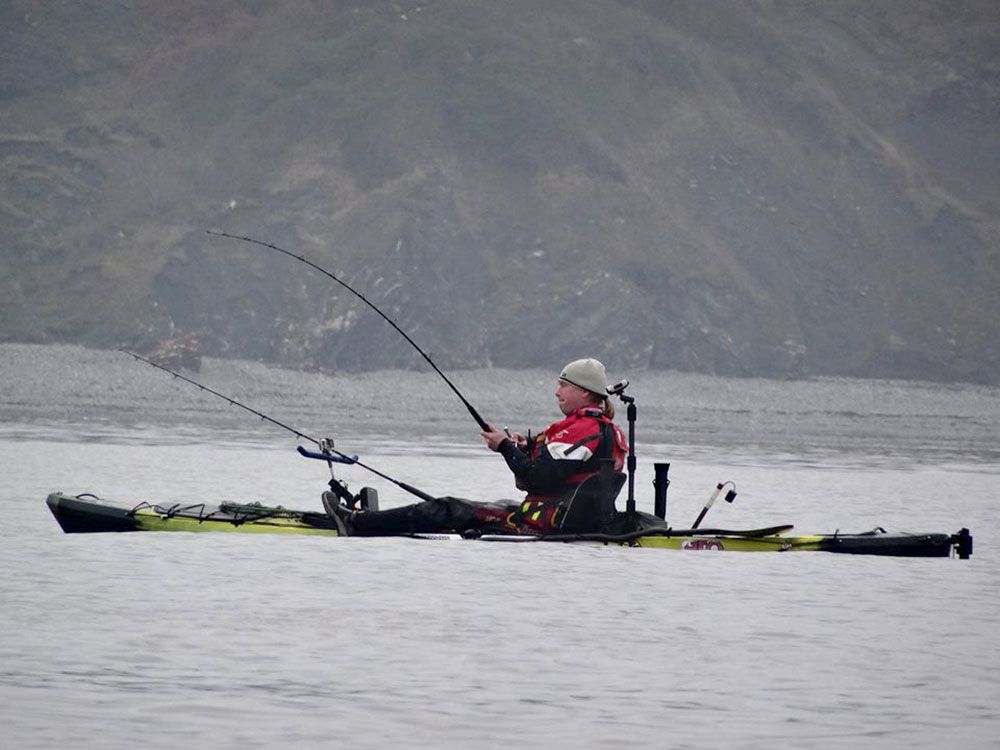
There isn’t much finesse to kayak fishing at Blue Anchor. The water is filthy and the tides ferocious, so big smelly baits wrapped tightly in Tronixpro bait elastic are the order of the day on simple running ledger rigs. The braid is passed through a bead, and then a Tronixpro Medium Zip Slider is slid onto the line followed by another bead. A large Tronixpro interlock snap swivel is then attached. This is the basic rig, it really couldn’t be simpler. The hook length is a large Tronxipro rolling swivel, usually a size 4 or 6 which have a breaking strain of over 60lb at one end. Then a length of 70lb mono with a pair of 5/0 hooks, one slid onto the line with the other tied at the end, making a pennel rig. The heavy line is necessary to combat the ever-present congers and stop them biting through your line. It is better to fish heavier that you normally would, the pressure put on the tackle with a large bucket mouth cod holding in the tide tests your equipment to the limit.
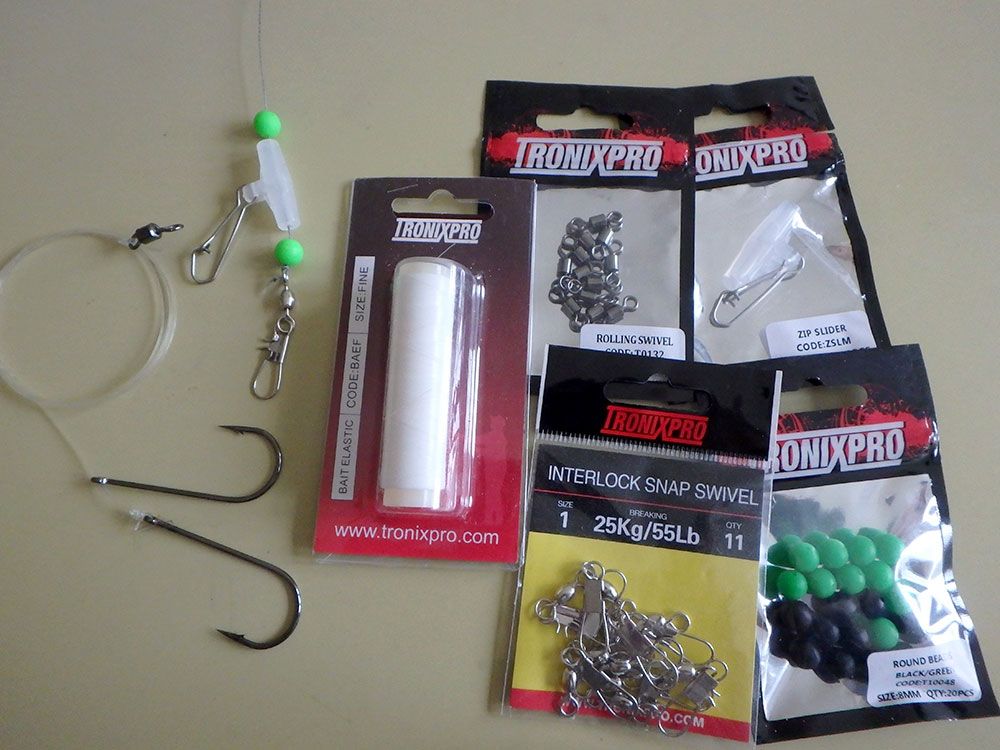
When fishing with this rig I always have a couple of spare hook lengths tied up. Creating an appetising cod bait of lugworm and squid takes time, if you wait until you have brought your rod in to create a new bait you’re wasting precious fishing time. If the bait isn’t in the water you aren’t going to catch fish! This way you can be baiting up the spare trace whilst fishing and when you bring the lines in simply unclip the old trace, clip on the new one and cast out. It means your baits aren’t out of the water for more than a couple of minutes.
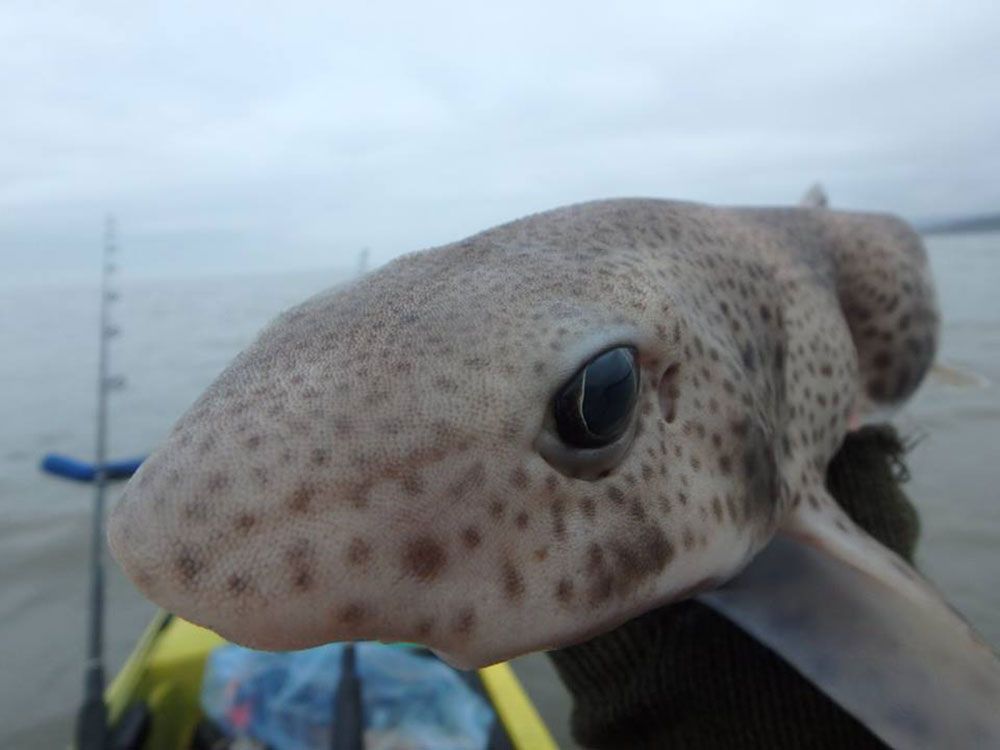
I’ve also found it also pays to vary the lengths of the snoods. I’ve always favoured a hook length of four or five foot, and over the last few years this has worked well for me. However, during this session, I was catching thornback rays and whiting in numbers, yet it was apparent that others around me were catching a lot of conger and the odd small codling, but catching no rays. I was here to catch species, so I needed a conger. Watching the others the only difference I could see was that they were using much shorter hook lengths, only twelve inches in some cases. On cutting down the hook length on one of my rods, the result was instant, within ten minutes I had an unmistakable conger bite and a 10lb strap was soon on the yak. No monster but great fun and when species hunting the size doesn’t matter, the species does.
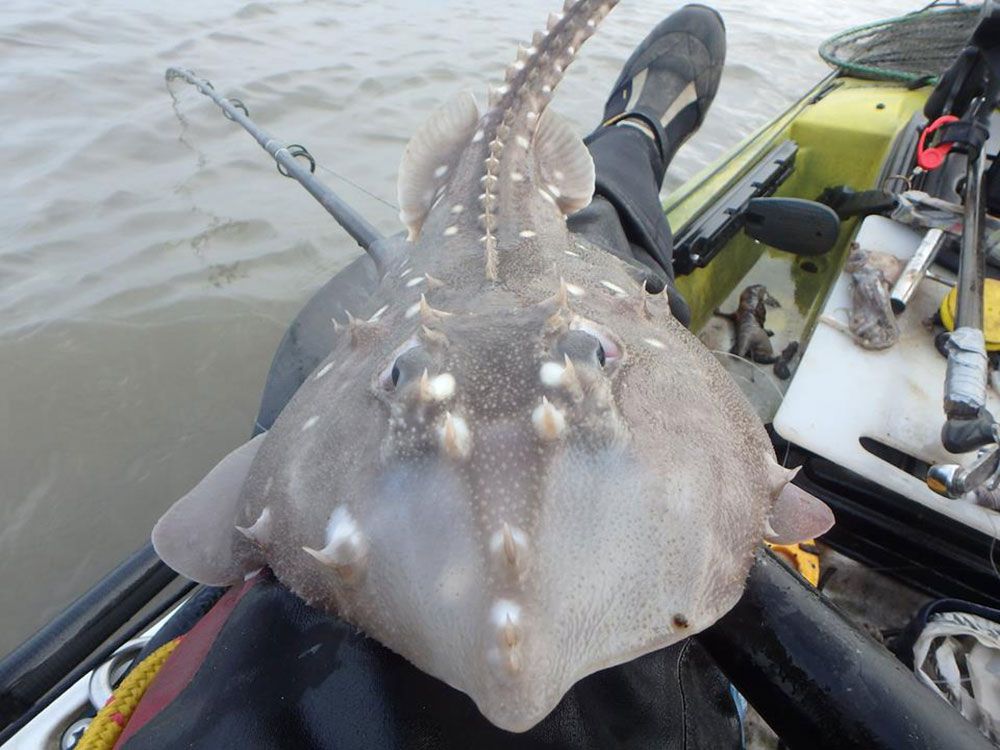
As it turned out I couldn’t find a cod on the day, in fact only four small ones were caught between the forty anglers taking part, but I had plenty of fish. The whiting were ever present but with some specimens going over the two pound mark they were great fun. It wouldn’t be the Bristol Channel without a lesser spotted dogfish or two and I had several thornback rays up to double figures as well as conger eels close to twenty pounds.
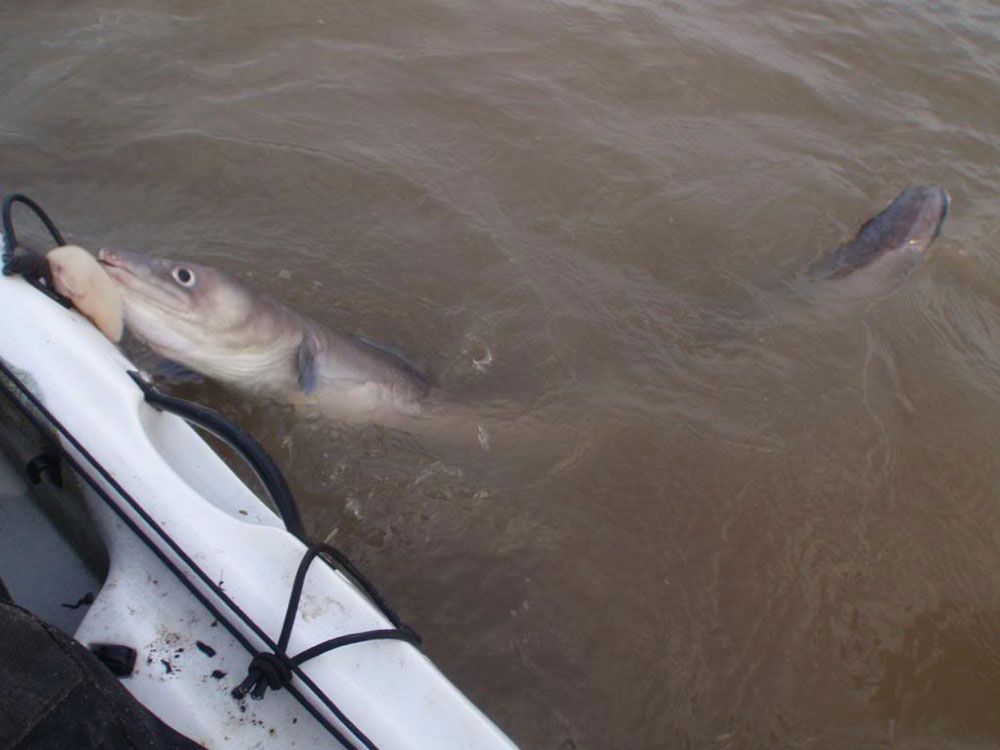
That’s four species to get the year started, one of which (conger) I didn’t manage last year. It seems that every year my first session turns up something I missed the previous year, and every year I seem to miss an easy target that I have always managed before. Let’s just hope that this year it all comes together and I hit the 50.
FEBRUARY
This is always a hard month for my kayak fishing and this year has been no different. Wind has been a dominant feature of the weather and that makes saltwater kayak fishing almost impossible. I had hoped to get down to the South West with some packets of Tronixpro Sabiki’s and my Hart Absolute Spin and make a sustained attack on the large shoals of herring and joey mackerel that are resident there at this time of year, but unfortunately the weather has meant this will have to wait.
However, one of the benefits of fishing for different and unusual species over the year is that you build up a knowledge of venues that hold one or two different species and often these can be close inshore making them accessible in most conditions. I grew up in Grimsby and fished there from an early age. Throughout my childhood all my fishing targeted half a dozen species. I now know there are at least twenty five viable target species I can target just launching from Cleethorpes beach. With fish ranging from a few ounces to well over ten pounds all within easy reach.
One of my back up venues is the end of a long groyne in Cleethorpes. It’s the first major obstruction where the tide meets as it leaves the River Humber on the ebb. This creates a strong current around the end and an eddy just inside. It is too long a cast for beach anglers to reach the turbulent water at the end, but with the kayak I can position myself anywhere I like taking advantage of both the tide and the slack. In summer it can be a great bass mark, but at this time of year it is the smaller residents I was targeting, the humble rockling and viparious blenny.
For this type of fishing you need to go light, so my favourite HTO Rockfish Revolution was the rod of choice, coupled with a HTO Rockfish reel. When you attend saltwater species hunting events around the UK, it is rare to see a kayak that isn’t carrying this rod as part of its armoury. Although not intended for bait fishing, it has crossed over perfectly. The sensitivity of the tip shows up the smallest of bites but it also has the backbone to cope with much larger fish. I’ve had large bream, smoothound, wrasse and even small conger on this rod and it has dealt with everything that has been thrown at it with ease.
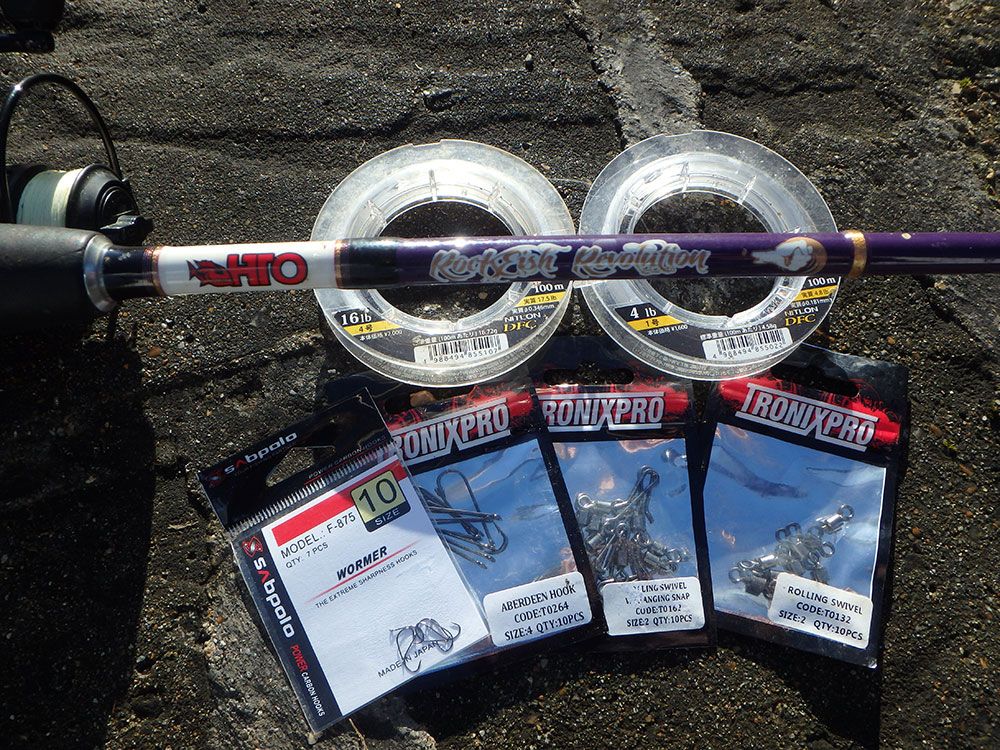
The rig is a simple two hook flapper made with a size 2 Tronixpro rolling swivel at one end and size 2 Rolling swivel with hanging clip a the other to attach a small lead. Hooklength is 8lb YGK Nitlon DFC Fluorocarbon with size 10 Sabpolo Wormer hooks on the end.
The fishing is never going to be hectic here at this time of year, but you need to keep checking your bait and recasting as the crabs can be relentless in searching out your small pieces of worm. However soon enough the rod was nodding, not with the intended species but with small codling, up to around 1lb. In the session, I had around a dozen of these, a surprise and great fun on such light gear. It bodes well for the future to see so many of these in the River Humber.
After an hour, I felt I needed to move more into the slack to find my target species. After a few more codling I had a much more tentative bite resulting in my first Five Bearded Rockling of the year. Many people would view this as a trash fish but I love the fact that I can go out in the morning targeting these small innocuous species and a few hours later I have one on board. It’s this knowledge and ability to specifically target an individual species that has won me many kayak fishing tournaments over the years. Unfortunately, the eel pout didn’t show up this time, but I know they are here so will probably have another go for them at the back end of the year.
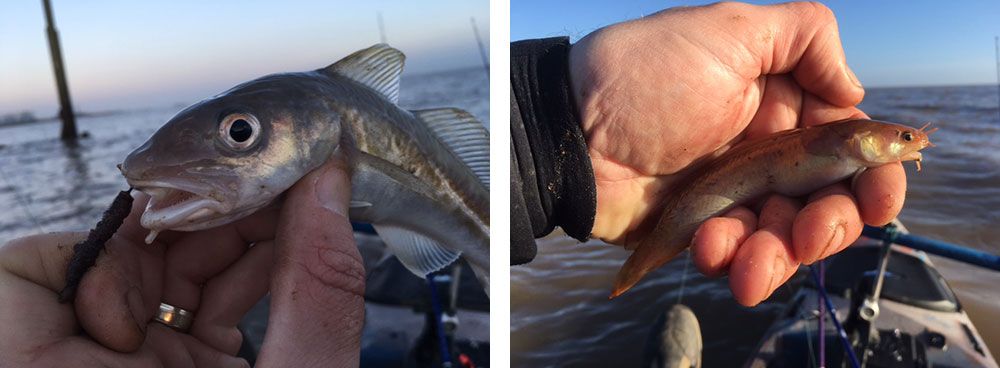
A couple of days later saw a slight break in the weather, I was still in Grimsby so a flounder session was on the cards. I had very little tackle with me and no bait but fortunately the flounder here love bluey so after a rummage in my dad’s bait freezer I was equipped. Humberstone Creek was the venue, a fast flowing and steep shelving creek that is usually full of flatfish during the winter months.
Once again, the HTO Rockfish Revolution was the rod of choice. The rigs and components were to stay basically the same, just a change to size 4 Tronixpro Aberdeen hooks. I prefer an Aberdeen when pleasure fishing for flounder simply for ease of unhooking. These flounders can inhale the bait and the Wormer hooks can be difficult to unhook. It didn’t take long to find the fish and bites were continuous through the session. I was hitting the bites early to try and avoid deep hooking but because the fishing was so prolific I also took the opportunity to make this video. This venue can be great fun on light gear as flounders certainly put up a great fight on balanced tackle, but after ten fish and getting the film I needed it was time to call it a day. The fish had been kept in a carp sack so were taken ashore for a few pics and some film before being released back into the muddy waters.
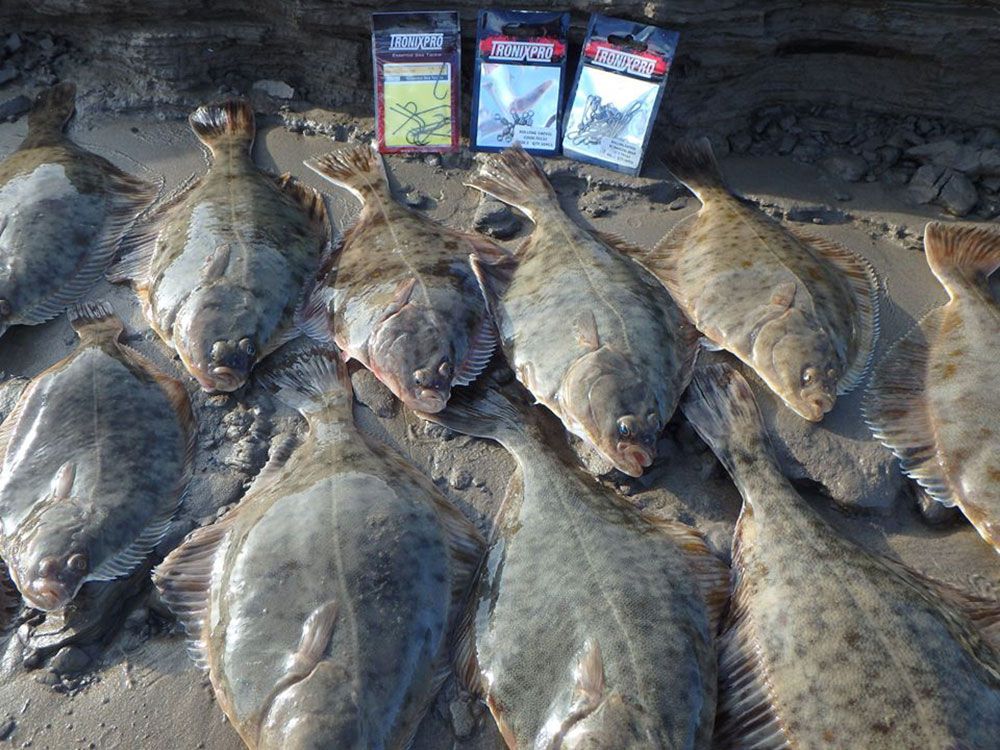
Considering the lack of fishing opportunities during February adding three species – cod, five bearded rockling and flounder to my list was OK, taking me to seven for the year. Amazingly two of the seven are ones I missed last year and its always great to target a single species in a session and succeed.
Hopefully March will be calmer and I can hit the South West after those herring shoals.


